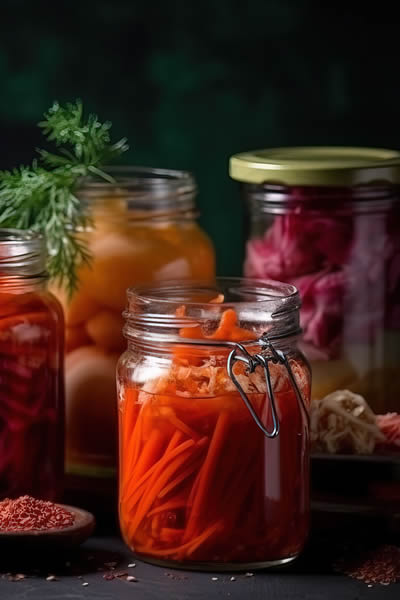K.I.S.S. Diet Plan
(AKA… Keep It Simple & Straightforward)
People often ask, “What’s the healthiest diet?” With options like keto, vegetarian, vegan, carnivore, and more, plus endless food advertising and conflicting info, it’s confusing! Figuring out where to start for a healthier diet can be overwhelming.
When I was in school, my friend and fellow classmate Krystal was the queen of acronyms. So, because she inspires me (and because her name also begins with “K”), I am using the infamous acronym KISS to come up with some simple guidelines to follow for anyone wanting to choose a healthier lifestyle.

First, let me start by saying the most important and simplest point to remember is to keep it real! EAT REAL FOOD! As one of my inspirations, author, journalist, and activist, Michael Pollan says, “if it doesn’t rot, don’t eat it”!
Unfortunately in our quest for convenience, we’ve outsourced our food supply, resulting in costly, nutritionally empty pseudo foods. And we now face high rates of heart, diabetic, and autoimmune diseases. Remember, food companies prioritize profit, not your health. Take charge of your well-being; don’t let others dictate what goes into your body.

Go for foods connected to the earth and as close to their natural form as possible.
Take fruit juices, for instance—I’m not a fan. An orange is packed with nutrients and fiber, but orange juice loses the fiber and piles on double the calories and sugar. Notice the difference?

Let's Begin
K
Kimchi, Kefir, Kombucha, Kraut (as in sauerkraut)… in other words, something fermented. Miso, tempeh, and apple cider vinegar are also good choices as well.
I love fermented foods! Why?
Our guts are full of trillions of bacteria—live microorganisms aiding digestion, improving metabolism, and enhancing immune function.
Fermentation, an ancient food preservation method, was widely used before refrigeration.
Early societies, facing winter scarcity, preserved crops, and prevented milk spoilage with salt. Milk fermentation began around 8000 B.C in the Middle East, while fish fermentation dates back to 7000 B.C in Sweden.
Genghis Khan’s soldiers ate sour cabbage for health during raids in his conquest of Asia, introducing it to Europe.
Germans adopted it, bringing sauerkraut to America in the 1700s. Despite a post-World War I decline due to anti-German sentiment, sauerkraut’s popularity has rebounded since the 1970s.
Eating fermented foods, packed with probiotics, boosts gut microbe diversity, and supports the immune system. These foods also provide digestive enzymes, aiding nutrient absorption. For instance, fermenting cabbage makes vitamin C more absorbable. According to Dr. Natasha Campbell McBride, in fresh cabbage, vitamin C is bound in the cellulose structure and various other molecules, and our digestive system is just not able to cleave it off and absorb it. Lots of it goes undigested and comes out right out of you… But if you fermented that cabbage and made sauerkraut, all the vitamin C becomes bioavailable. Eating something fermented every day will help strengthen the lining of our digestive tract.
Opt to eat something fermented every single day – one to three servings: one third cup of sauerkraut, one cup of kombucha tea, small bowl of miso, one tbsp of apple cider vinegar in a small glass of water.
Choose fermented foods over probiotic supplements as the supplements usually contain only a few strains of beneficial bacteria, as opposed to fermented foods which usually contain over a hundred strains of bacteria. Remember, the more diverse the flora, the better.

Fermented Hot Tips:
- First, pickled cucumbers are not fermented. They are preserved in vinegar and do not offer any probiotic benefit.
- Secondly, when purchasing ready made sauerkraut – buy it fresh or “raw” from the refrigeration section as the probiotics are still living and active. The pasteurization process in canned sauerkraut loses the active enzymes and depletes much of the benefits.
- Be cautious when eating store-bought yoghurt. The added flavours and colourings often negate the benefits. Choose plain, organic Greek yoghurt to ensure you are getting the benefits and add your own berries if looking for some added flavour. Better yet, make your own! There are plenty of homemade yoghurt recipes on the internet…use organic ingredients, and if you are like me…. Use your slow cooker for an even easier option!
- When eating bread, choose an authentic sourdough made with natural leavening and without commercial yeast.
I
Think “Intestines”. What am I eating today to nourish and protect my intestines? While it is difficult to get accurate statistics for Canada, millions of people in North America are affected by “leaky gut“.
More than 2000 years ago, Hippocrates supposedly declared that “all disease begins in the gut”, and most certainly, in recent years there has been an explosion of scientific literature to suggest he was right!

Leaky gut is when your digestive barrier, like a protective wall, develops tiny holes. In a healthy gut, nutrients enter the bloodstream while keeping out harmful stuff. But with leaky gut, these holes let both good nutrients and the unfriendly elements like undigested food, toxins, and bacteria enter the bloodstream.

This can trigger an immune reaction, as your body thinks these invaders are threats…and that’s when you might experience symptoms like bloating, cramps, fatigue, or even more pronounced digestive disorders such as Crohn’s Disease, IBS, and Celiac Disease and more widespread issues like obesity, food intolerances and allergies, skin problems, arthritis and joint pain, or autoimmune responses. There is also mounting evidence of a link between leaky gut and diabetes and heart disease. In fact, patients with heart disease show higher incidences of leaky gut compared to those who don’t have heart disease. Inflammation not only promotes plaque in the arteries, but it also weakens the stability of this plaque. Plaque stability is important to prevent heart attacks.
The top 6 contributing factors that lead to leaky gut syndrome are:
- White processed sugar and high fructose corn syrup – candies, candy bars, cereals, soft drinks, baked goods
- Gluten containing grains such as wheat, barley, rye, and triticale
- Alcohol consumption
- Nutrient deficiency
- Stress
- Long term use of NSAIDs (Non-steroidal anti-inflammatory drugs) such as Ibuprofen and Naproxen
So, what are we to do?
Good news: while fixing leaky gut isn’t an overnight thing, thousands of studies reveal that changing our diet and lifestyle has shown to be the most powerful intervention for healing and sealing up the damage in our gut lining.
While there are various healing diet options including GAPS and Low Fodmap, the most crucial approach for using diet as therapy is to prioritize real, whole foods.
That said, there are some key foods and liquids that you may want to remove or reduce at least temporarily:
- Processed & artificial foods
- Gluten containing foods (cereals, pasta, breads, baked goods, beer, crackers)
- Alcohol
- Dairy
Bone Broth
BONE BROTH because it is rich in collagen, gelatin, and amino acids, which all help repair and strengthen the gut lining.
Probiotic-rich Foods
PROBIOTIC-RICH FOODS such as kimchi, kombucha, kefir and yoghurt for their beneficial bacteria.
Fibre-rich Foods
FIBRE-RICH FOODS as they help plug those holes and seal leaky gut by nourishing beneficial bacteria, boosting mucus, regulating bowel movements, and supporting a diverse microbiome. Incorporating legumes, vegetables, fruits, ground flaxseeds and chia will go along ways towards a healthy gut lining.
Omega-3 Fatty Acids
OMEGA 3 FATTY ACIDS which are found in fatty fish (like salmon), flaxseeds, and chia seeds. Omega-3s, with anti-inflammatory properties, can help manage the inflammation that is almost always linked to leaky gut.
Coconut Products
COCONUT PRODUCTS such as coconut oil and coconut meat (also rich in fibre) contain medium-chain triglycerides (MCTs) that have antimicrobial and anti-inflammatory effects, supporting gut healing.
Healing leaky gut involves more than just dietary changes. The top 5 lifestyle practices I recommend to help prevent or calm, soothe, and restore a leaky gut:


QUALITY SLEEP: which is crucial for overall health, including gut function. We now know that inadequate sleep is linked with leaky gut, but it’s a question of which comes first…the chicken or the egg? Does leaky gut contribute to poor sleep? Or does poor sleep contribute to leaky gut? It’s likely both!

REGULAR EXERCISE: Many studies show that inactivity and a sedentary lifestyle contribute to gut dysbiosis (imbalanced gut bacteria) which in turn contributes to leaky gut. In addition to regular exercise that includes resistance training, integrating regular movement all day long will help to strengthen our gut barrier. Ways to include movement in your day:
- Parking further away and walking some distance to your destination!
- Getting up from your desk and stretching every hour!
- Cleaning your home yourself: Hot tip: when we were raising our kids, we made a daily cleaning ritual a thing in our home. After dinner, each of us took on a room, set a 15-minute timer, cranked up some lively tunes, and got cleaning. It’s a fun and effective way to keep your place spick and span, everyone chips in, you stay active, and it won’t cost you much!


S
Sugar – Remember the “just say no to drugs” commercials of the 1990’s?
Today it should be “just say no to sugar”…
Canadians eat about 1/3 less sugar than Americans but we still average 26 teaspoons daily. A 2022 University of Alberta study in The Canadian Journal of Public Health connects processed sugar to 16 chronic diseases, costing Canada $5 billion yearly in related healthcare expenses!
Processed sugar… Just say NO! It contributes to leaky gut and imbalanced blood glucose levels. This includes all the low-calorie sugar substitutes such as aspartame (Equal), acesulfame (SweetOne) potassium, saccharin (Sweet n’ Low), and sucralose (Splenda). Although the FDA approves them as “generally” safe…most sugar substitutes are chemically based non-foods that our bodies do not recognize. Indeed, the World Health Organization is about to recognize aspartame as a possible carcinogen.
Instead of white processed sugar, choose natural sweeteners that also bring healthy benefits with them. These include:

Raw Honey: a true superfood and one of nature’s best sweeteners! It is loaded with enzymes, antioxidants, and various essential nutrients like iron, zinc, potassium and vitamins. These elements combat free radicals, aid digestion, and promote healthy bacteria growth. Opt for raw, ideally local, honey from farmers markets or local beekeepers to retain maximum benefits, as pasteurized honey loses some of its benefits.

Dates: provide potassium, copper, iron, manganese, magnesium and vitamin B6. They are easily digested and help metabolize proteins, fats and carbohydrates. Evidence shows that dates may help reduce LDL cholesterol in the blood and may reduce the risk of stroke.

Coconut Sugar: has a low glycemic load and is rich in minerals! I personally use mostly coconut sugar for baking and sometimes dates.

Maple syrup: another one of nature’s best natural sweeteners…because it is rich in antioxidants to help neutralize free radicals and reduce oxidative stress. Maple syrup is heat stable so it can be used in sauces and glazes.
Hot tip: I make my own BBQ sauce with a bit of maple syrup, apple cider vinegar, Worcestershire sauce, Dijon mustard, and tomato paste…healthy and delicious!

Banana puree: high in fiber and potassium and a good source of vitamins B6 and C.
S
Salt!! – There is a lot of hysteria over salt and its consumption due to high sodium levels. The real culprit is…. table salt.
Table salt is manufactured salt that is stripped of its natural minerals and thus leaves us with a sodium imbalance compared to other valuable minerals present in other salts. Where sodium goes, water goes. Excess sodium in the blood leads to high blood pressure, doubling heart failure risk. Furthermore, anticaking agents are added to table salt, and some of these agents contain trace amounts of aluminum. Although the amounts of aluminum are tiny, it is possibly carcinogenic, and we know aluminum accumulates in the brain possibly contributing to neurodegenerative diseases such as Alzheimer’s.
Having said that, most of the salt we consume does not actually come from the table salt we add to our foods. Unfortunately, 70% of the salt we consume comes from the processed foods we eat…aka the standard American diet (SAD).
You don’t have to eliminate salt entirely; in fact we actually need it, and getting enough of it is vitally important. Too little salt may lead to electrolyte imbalances, dehydration, and adversely affect our cardiovascular and neurological health.
What ways can we reduce and optimally manage our salt consumption?

Himalayan or Celtic Sea Salt: Opt for Himalayan or Celtic sea salt over white table salt. It is said that Himalayan salt’s pink color comes from its approximately 80 minerals. Celtic sea salt is unrefined and unprocessed, retaining minerals like magnesium and calcium without additives. I use a mix of both in my countertop salt mill!

Naturally Salty Foods: Eat naturally salty foods like carrots, celery, beets, seafood, seaweed, grass-fed cottage cheese, eggs, apples, and avocados which will satisfy those salty cravings.

Spices: Use spices to flavour: pepper, garlic, turmeric, paprika, lemon zest, nutritional yeast, rosemary, and dill are all great salt alternatives.

Reduce Takeout and Processed Foods: Significantly reduce fast food takeout and processed foods: chips, crackers, bouillon cubes, processed meats / cold cuts, packaged noodles, pizza, sushi and tempura, condiments, salad dressings, canned soup, frozen meals, mac n’ cheese, and processed cheese.

Prepare Meals at Home: Prepare more meals at home, allowing you to control the amount of salt in your dishes. Restaurant and fast-food meals almost always contain higher sodium levels.
Seal it with a K.I.S.S.
So when it comes to eating clean and healthy, seal it with a
K – kraut, kimchi, kombucha, kefir (and other fermented foods)
I – intestinal health…nourish with fibre, healthy fats, and bone broth
S – sugar – just say no!
S – salt – Himalayan or Celtic sea salt
Additional Resources
- Rezak, Shannon; Kok, Car Reen; Heermann, Melanie; Hutkins, Robert (August 2018) Fermented Foods as a Dietary Source of Live Organisms. https://doi.org/10.3389/fmicb.2018.01785
- Hannah D. Holscher (2017) Dietary fiber and prebiotics and the gastrointestinal microbiota, Gut Microbes, 8:2, 172-184, DOI: 10.1080/19490976.2017.1290756
- Yuanyuan Li, Yanli Hao, Fang Fan, and Bin Zhang; The Role of Microbe in Insomnia, Circadian Disturbance and Depression, https://doi.org/10.3389%2Ffpsyt.2018.00669
- Liu, S., Munasinghe, L.L., Maximova, K. et al. The economic burden of excessive sugar consumption in Canada: should the scope of preventive action be broadened? Can J Public Health 113, 331–340 (2022). https://doi.org/10.17269/s41997-022-00615-x
- Food Facts / Sodium in your Diet; fda.gov/media/84261/download
Subscribe to
Support Your Wellness Journey
Enter your email to be notified when new articles are published.
